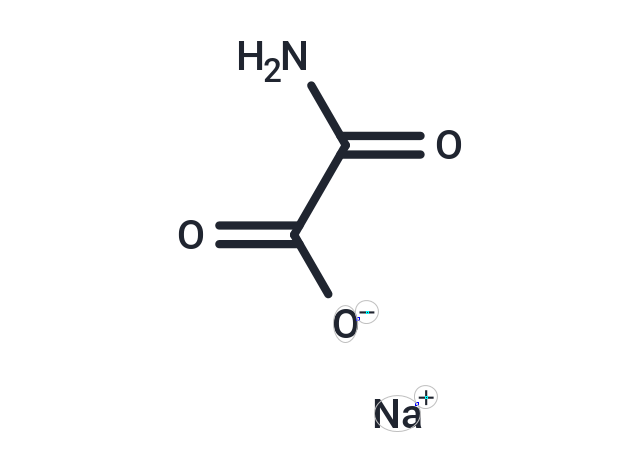Shopping Cart
Remove All Your shopping cart is currently empty
Your shopping cart is currently empty
Sodium Oxamate (Oxamic acid sodium salt) is an LDH inhibitor that specifically inhibits LDHA. Sodium Oxamate has antitumor activity and induces cell cycle arrest and apoptosis.

| Pack Size | Price | USA Warehouse | Global Warehouse | Quantity |
|---|---|---|---|---|
| 1 g | $31 | In Stock | In Stock | |
| 1 mL x 10 mM (in H2O) | $39 | In Stock | In Stock |
| Description | Sodium Oxamate (Oxamic acid sodium salt) is an LDH inhibitor that specifically inhibits LDHA. Sodium Oxamate has antitumor activity and induces cell cycle arrest and apoptosis. |
| Targets&IC50 | HBE:96.73 ± 7.60 mM, A549 cells:19.67 ± 1.53 mM, MIAPaCa2 cells:18.9 mM, H1299 cells:32.13 ± 2.50 mM |
| In vitro | METHODS: Human lung cancer cells H1299, A549 and normal human bronchial epithelial cells HBE were treated with Sodium Oxamate (1-100 mmol/L) for 24 h. Cell viability was measured by CCK-8 assay. RESULTS: Sodium Oxamate significantly inhibited the cell viability of H1299 and A549 cells in a dose-dependent manner, with IC50 of 32.13±2.50 and 19.67±1.53 mmol/L, respectively. Sodium Oxamate had almost no effect on HBE cells, with an IC50 of 96.73±7.60 mmol/L. [1]. METHODS: Human lung cancer cells A549 and normal human bronchial epithelial cells HBE were treated with Sodium Oxamate (20-100 mmol/L) for 24 h, and several intracellular biochemical parameters were measured. RESULTS: LDH activity, ATP content and NADPH/NADP ratio were significantly decreased and ROS content was significantly increased in A549 cells after Sodium Oxamate treatment. In contrast, glucose metabolism was less affected, although LDH enzyme was also inhibited in a dose-dependent manner in HBE cells. [2] |
| In vivo | METHODS: To detect the antitumor activity in vivo, Sodium Oxamate (300 mg/kg once a day) and pembrolizumab (10 mg/kg twice a week) were intraperitoneally injected into B-NDG mice carrying human lung cancer tumor H1299 for fifteen days. RESULTS: Both Sodium Oxamate and pembrolizumab significantly delayed tumor growth in monotherapy, and the combination therapy was more effective. [1] METHODS: To explore the potential for the treatment of diabetes, Sodium Oxamate (350-750 mg/kg) was administered intraperitoneally to db/db mice once daily for twelve weeks. RESULTS: Sodium Oxamate treatment reduced body weight gain, blood glucose and HbA1c levels, and improved insulin secretion, pancreatic islet morphology, and insulin sensitivity in db/db mice.Sodium Oxamate improves glycemic control and insulin sensitivity in db/db mice, primarily by inhibiting the production of tissue lactic acid. [3] |
| Synonyms | SO, Oxamic acid sodium salt, oxamate sodium, Aminooxoacetic acid sodium salt |
| Molecular Weight | 111.03 |
| Formula | C2H2NNaO3 |
| Cas No. | 565-73-1 |
| Smiles | [Na+].NC(=O)C([O-])=O |
| Relative Density. | no data available |
| Color | White |
| Appearance | Solid |
| Storage | store under nitrogen | Powder: -20°C for 3 years | In solvent: -80°C for 1 year | Shipping with blue ice/Shipping at ambient temperature. | |||||||||||||||||||||||||||||||||||
| Solubility Information | H2O: 25.5 mg/mL (229.67 mM), Sonication is recommended. DMSO: Insoluble | |||||||||||||||||||||||||||||||||||
Solution Preparation Table | ||||||||||||||||||||||||||||||||||||
H2O
| ||||||||||||||||||||||||||||||||||||
| Size | Quantity | Unit Price | Amount | Operation |
|---|

Copyright © 2015-2025 TargetMol Chemicals Inc. All Rights Reserved.